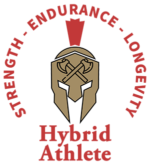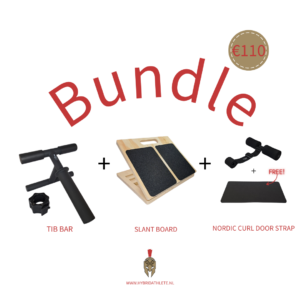
When people talk about ankle mobility, most of the time, they think about dorsiflexion. Even though the opposite plantar flexion and rotations exist, most athletes focus on increasing their ability to dorsiflex at the ankles.
If you’ve ever tried squatting at a gym (and since you’re here, you surely did), you’ve probably heard about the direct relation between dorsiflexion and a solid, deep squat. And that can’t be more true.
But, did you know that dorsiflexion affects your running too, as well as your ability to recover after? Let’s talk about ankle mobility, specifically the ability to dorsiflex properly.
Table of Contents
What is Ankle Dorsiflexion?
Dorsiflexion is the motion of pulling your toes towards your shin. In other words, it’s the shortening of the angle your foot and your shin create while your knee goes over your toes.
This motion occurs in a steady manner while you squat, yes, but it also happens when you run. To be more precise, the longer your stride, the better your dorsiflexion needs to be so that ankles can do their job of force-absorption. This, naturally, means that sprinters need exceptional dorsiflexion to maximize their performance.
The symptoms of poor dorsiflexion
There are several ways to recognize that you have a poor ability to dorsiflex your ankles, some more subtle than others:
- You can’t stay in a deep squat without raising your heels or falling backward
- Knee pain due to bad shock absorption after running
- Frequent issues like plantar fasciitis, Achilles tendinitis, runner’s knee, or shin splints
How to assess your dorsiflexion (knee-to-wall lunge test)
To asses how good or bad your ankle dorsiflexion is, you will need a measuring tape or a simple ruler. Also, it would be for the best to do this either barefoot or in minimalist shoes. Footwear with heel-elevation won’t give you accurate results, since it makes it easier to dorsiflex.
Here’s how to test your ankle dorsiflexion:
- Stand next to a wall and face it, with the tip of your toes touching it
- Put your passive leg behind, and push the active-leg knee forward toward the wall
- If you’re able to touch the wall with your knee (and you should at this point), go back a few centimeters, and repeat
- Proceed until you can’t reach the wall with your knee without raising the heel up
- When you find the sweet spot, measure the distance between your foot and the wall
- This is your dorsiflexion range
Due to differences in anatomy, there isn’t an exact value to say whether you have a good or a bad ability to dorsiflex. However, that range should start at about 9 to 10 cm foot-to-wall, and more than that is considered a healthy dorsiflexion range.
Remember – it’s important to keep your heel planted on the ground. Once the heel goes up, go back, find and measure the spot where you can push your knees over the toes with the heel staying on the ground.
Knees Over Toes exercises to help you increase dorsiflexion
1. Goblet squats
Goblet squats are an excellent exercise, not only for boosting dorsiflexion but for targeting the quads as well. You can do them on a flat surface, but to maximize the mobility and VMO gains, a slant board or squat wedges would be ideal.
To do a proper goblet squat, you’d also need a dumbbell or a kettlebell. This extra weight isn’t there for the extra resistance. The “goblet” is there to help you maintain balance and not fall backward while you’re in the lowest position.
Here’s how to do a goblet squat (with the help of a slant board):
- Stand on the slant board with your feet pointing downward
- Take a kettlebell/dumbbell and hold it next to your chest (10 to 20 kilos should do it)
- Brace your core, and descend into a squat by pushing your knees over the toes
- Go as deep as you can while keeping a straight back and go back up

2. Slant board stretches
The slant board has other uses besides pumping reps and doing challenging split squats (more on that in a minute).
You can also use it to stretch your calves and improve dorsiflexion at the same time. Only this time, you will be using it with your toes pointing up the slant, as shown in the image. This type of stretch will help you improve the range of motion and the angle that your shin is creating with the foot.

3. Split squats
Lastly, there’s no better way to put a good leg workout in, while boosting dorsiflexion, than a split squat. You perform a split squat by splitting your legs to do different things. This is what we call a unilateral movement – one side (left or right) is doing the exercise, while the other is stabilizing the rest of the body
In contrast to regular (bilateral) squats, split squats let you focus on the finer movement of the leg. This is why split squats tend to build balance, stability, and strength alongside dorsiflexion.
The most popular version of split squats (in order of difficulty) are:
- Bodyweight lunges
- Bulgarian split squats
- ATG/KOT split squats
- Pistol Squats
If you want to really spice things up once you get the hang of a split squat variation, do it with a slant board.
Stay consistent and trust the process
Improving ankle dorsiflexion has a lot of benefits, including but not limited to:
- Better shock absorption during running
- More explosive toe-off during sprints
- A more stable and deeper squat
- Improvements in the overall kinetic chain of the lower body (ankle-knee-hip)
- Injury prevention, especially for runners and OCR enthusiasts
Now, everyone needs to start somewhere. Some people are just hyper-flexible by nature, while others have to grind their way to a decent deep squat. If you do the test and see that your ankles aren’t exactly dorsiflexing enough, start your ankle mobility work yesterday. The rest of your body will thank you.
Get the best mobility KOT exercise equipment at our SHOP:
GET THE BEST INJURY-PREVENTION TRAINING EQUIPMENT:
Above all, a storyteller. Then comes marketing, branding, writing music, powerlifting, and woodworking.







